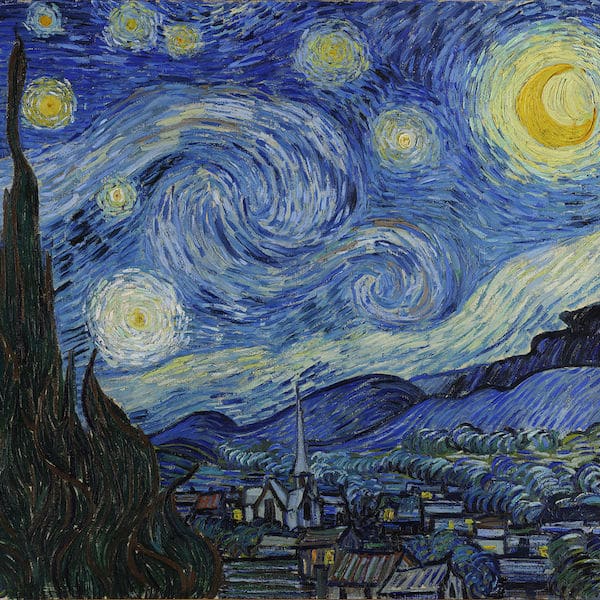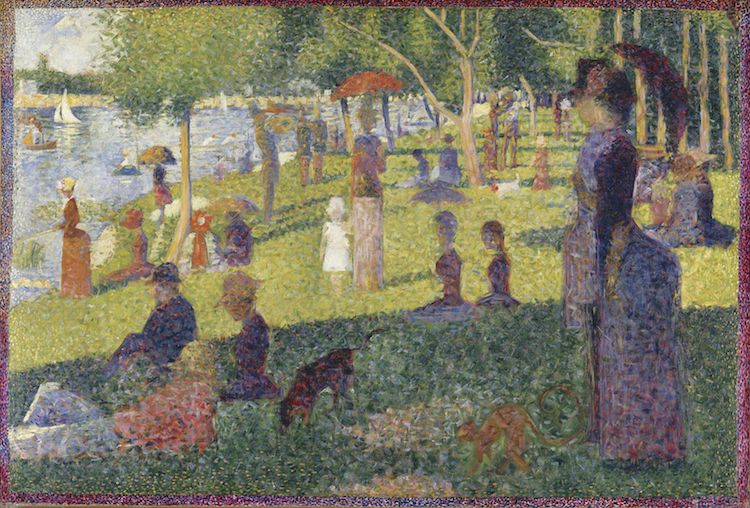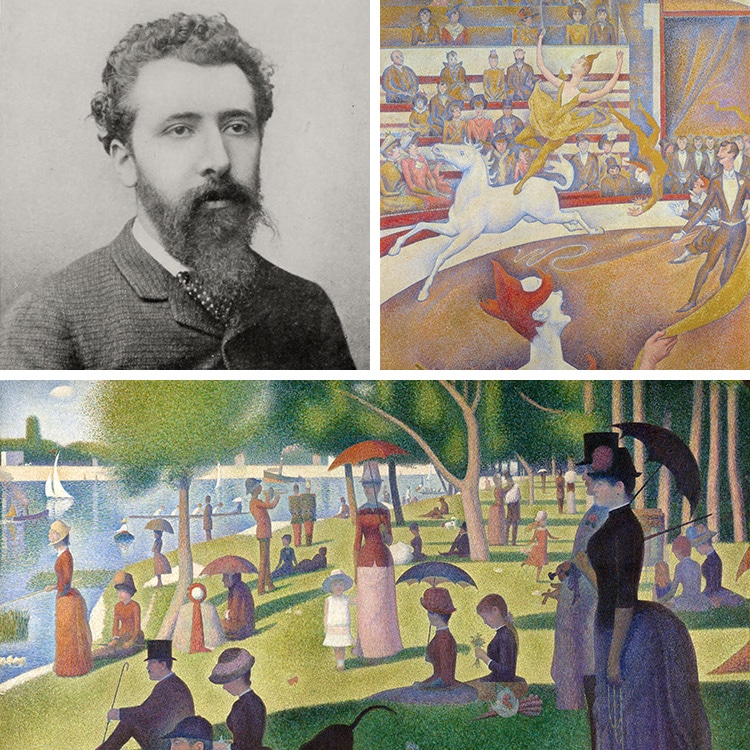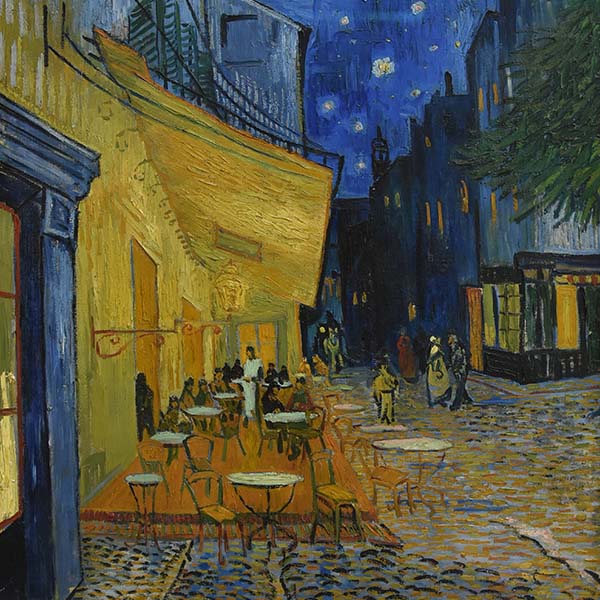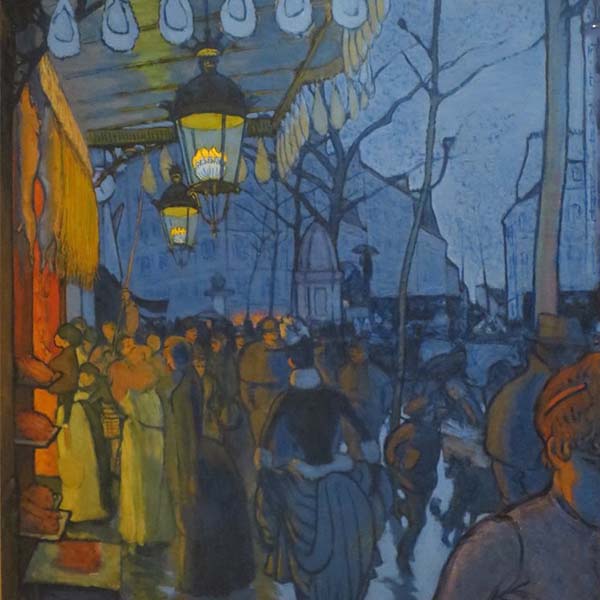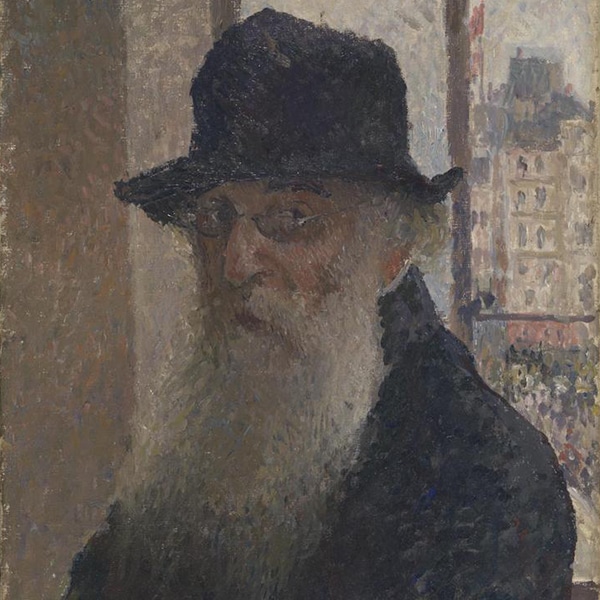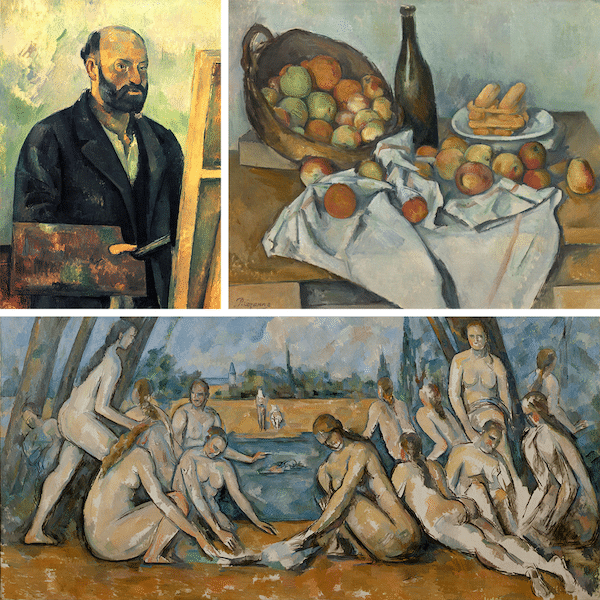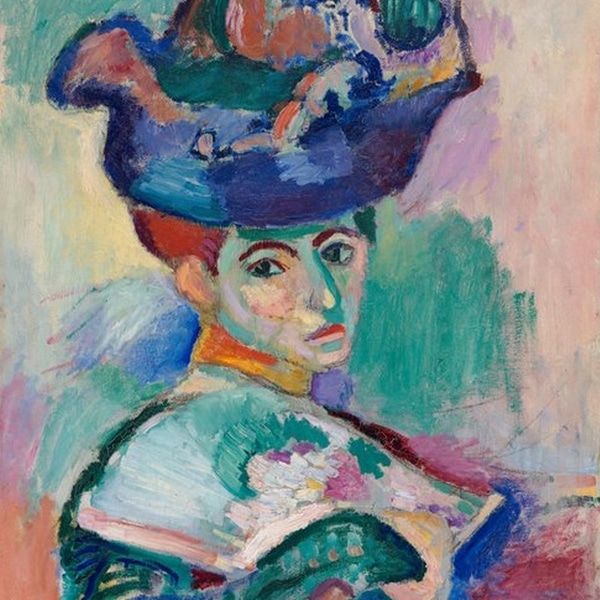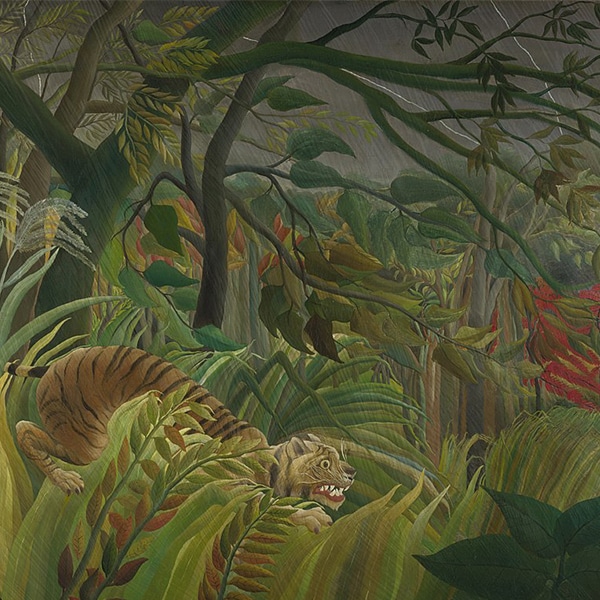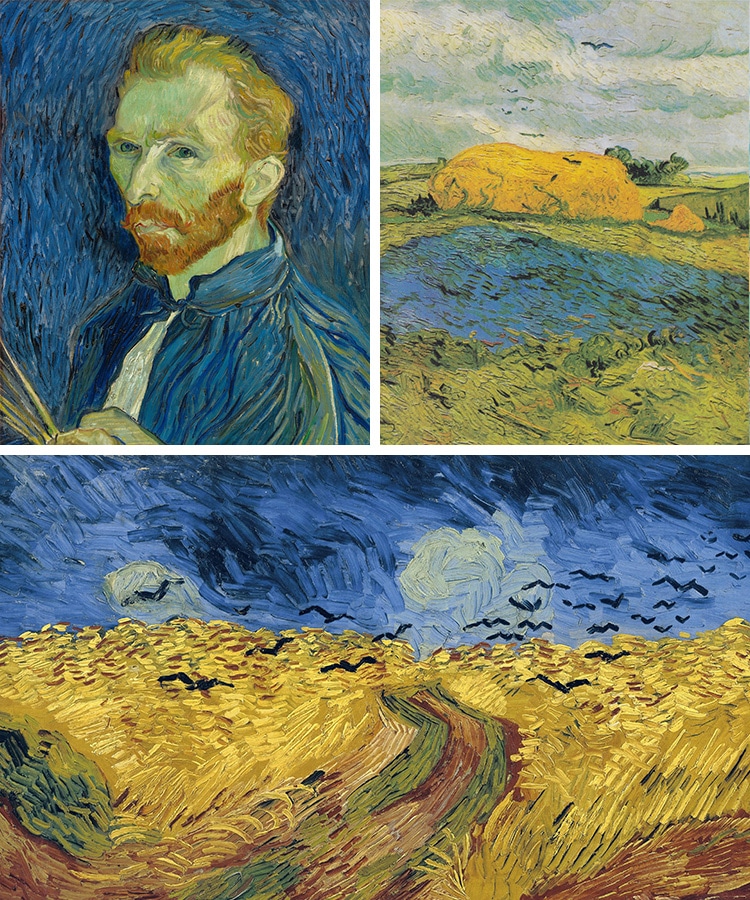
In a career that amounted to just 10 years, Vincent van Gogh created a varied body of work that continues to enchant people from around the world. His iconic Post-Impressionist style used a vibrant color palette and thick, expressive brushstrokes to convey the world around him. And while the Dutch artist succumbed to a gunshot wound at the age of 37, the weeks preceding his death were among his most productive periods as an artist.
Living and working in an artist town called Auvers-sur-Oise outside of Paris, he dedicated all of his time to painting, finishing one canvas a day, on average. His style—already highly unique—became even bolder, and his compositions even more ambitious. Between the time he arrived in Auvers-sur-Oise in mid-May and his death on July 29, 1890, he created over 70 paintings, in addition to dozens of sketches and drawings.
Here we will learn more about Van Gogh's last year and take a look at a couple of paintings theorized to be his final work.
Vincent van Gogh's Last Year
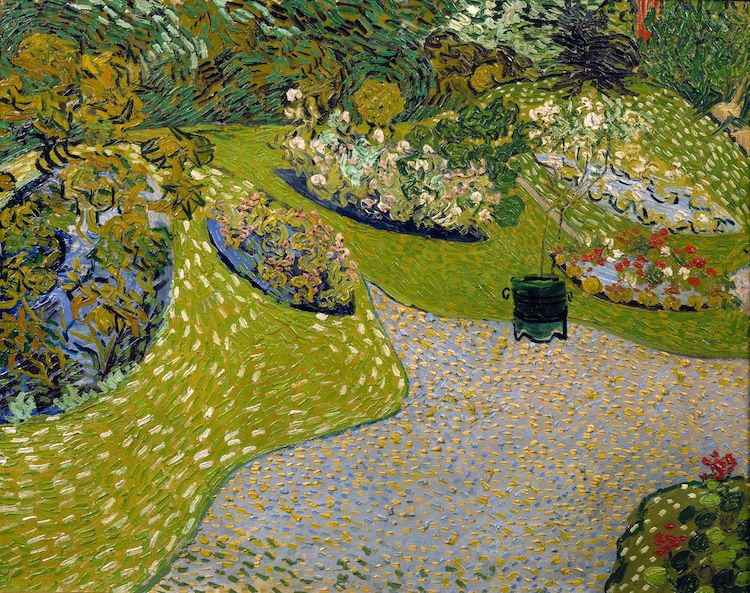
Vincent van Gogh, “Garden in Auvers,” 1890 (Photo: Van Gogh Museum via Wikimedia Commons, Public domain)
In May 1890, Vincent van Gogh (1853–1890) finally left the asylum near Saint-Rémy in France after living there for a year. Although he willingly checked himself into the facility the last May, he began to show signs of restlessness in his letters a couple of months before his departure.
“The surroundings here are beginning to weigh me down more than I can say… I need some air, I feel overwhelmed by boredom and grief,” he writes to his brother, Theo van Gogh.
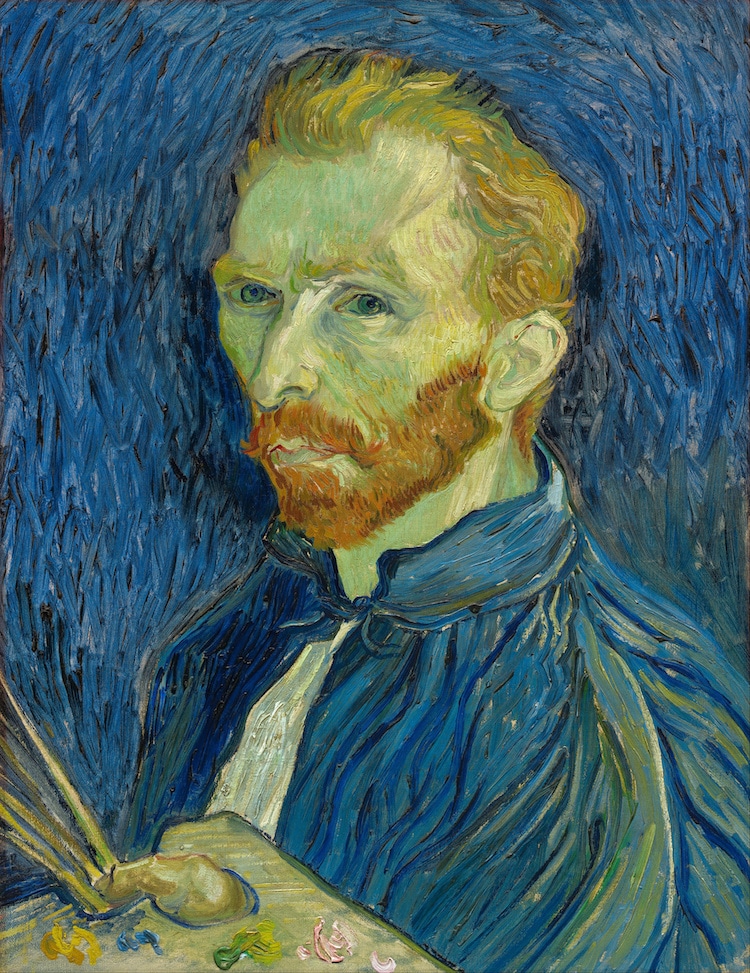
Vincent van Gogh, “Self-Portrait,” 1889 (Photo: National Gallery of Art via Wikimedia Commons, Public domain)
Nearly immediately after leaving the asylum, Van Gogh relocated to a small town outside of Paris called Auvers-sur-Oise, a popular destination for artists, where he was placed under the supervision of Dr. Paul Gachet, a physician and art collector.
There, he was also closer to his younger brother Theo, who worked in Paris and was responsible for financially supporting Van Gogh.
Financial Instability
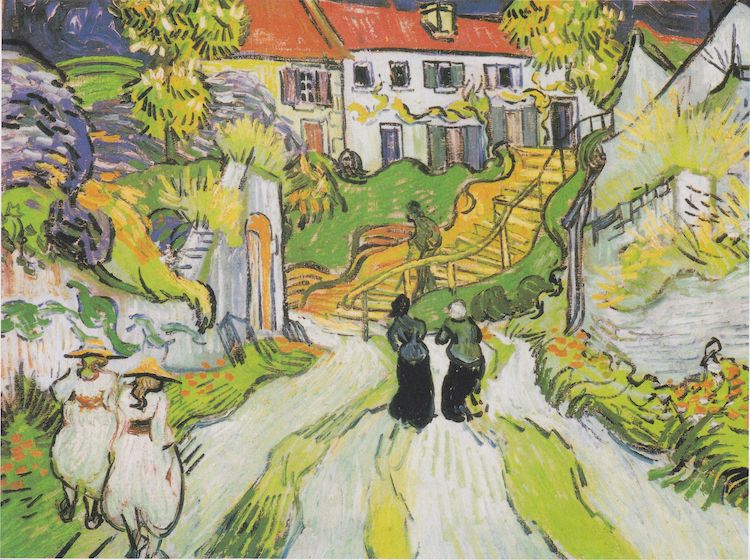
Vincent van Gogh, “Stairway at Auvers,” 1890 (Photo: Saint Louis Art Museum via Wikimedia Commons, Public domain)
Van Gogh famously was never able to sustain himself as an artist and relied on Theo for financial and emotional support throughout his life.
Although this arrangement went through several periods of ups and downs, it appears as though Van Gogh was especially concerned about finances in the weeks leading up to his death.
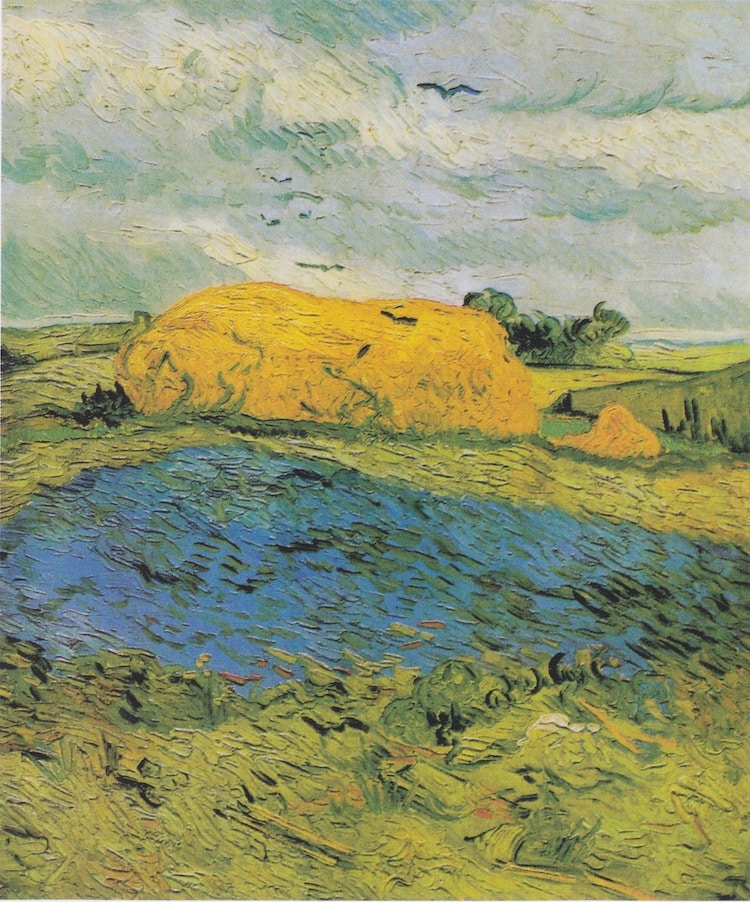
Vincent van Gogh, “Haystacks Under a Rainy Sky,” 1890 (Photo: Van Gogh Museum via Wikimedia Commons, Public domain)
At the time, Theo and his wife, Jo, were expecting a child, which would mean another person to support. Furthermore, Theo was considering leaving his job as an art dealer to start a business.
These changes very likely caused Van Gogh a great deal of anxiety, which likely transferred to the art he was producing at the time.
Last Paintings

Vincent van Gogh, “Wheatfields after the Rain (The Plain at Auvers),” 1889 (Photo: Carnegie Museum of Art via Wikimedia Commons, Public domain)
Upon arriving in Auvers-sur-Oise, Van Gogh threw himself into his work. He completed, on average, one painting a day. “I am giving my canvases my undivided attention. I am trying to do as well as certain painters whom I have greatly loved and admired…” he writes to Theo.
While this renewed energy may have been his way of coping with some of the anxiety surrounding finances and his mental health, and certainly his loneliness, it's clear that the artist was extremely inspired by the landscape. Wheatfields became a reoccurring subject, and he rendered several from different times of the day and perspectives.
Not only that, but Van Gogh's late art also appears to reflect a change in his style—in which his canvases became even bolder, more expressive, and at times, even abstract.
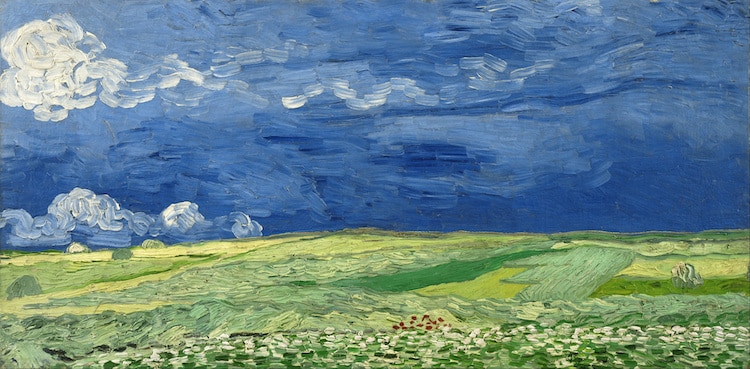
Vincent van Gogh, “Wheatfields under Thunderclouds,” 1890 (Photo: Van Gogh Museum via Wikimedia Commons, Public domain)
In total, Van Gogh completed over 70 paintings between the time he arrived in Auvers-sur-Oise in late May and when he died on July 29, 1890.
While there is no clear consensus on which painting was Van Gogh's last completed work—especially since he rarely dated his paintings—historians have made arguments for a couple of pieces that are confidently pinned to the month that the artist died.
Wheatfield With Crows, July 1890
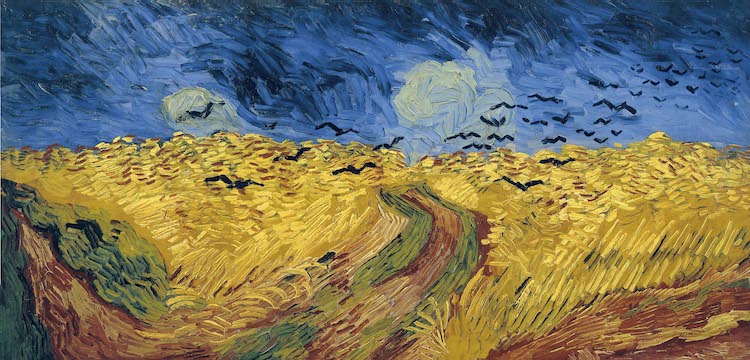
Vincent van Gogh, “Wheatfield with Crows,” 1890 (Photo: Van Gogh Museum via Wikimedia Commons, Public domain)
The painting that was commonly believed to be Van Gogh's final work is Wheatfield With Crows. Although now there is enough evidence to counter this theory, this painting is among the last works he produced and one of his most highly regarded compositions.
As part of Van Gogh's Wheatfields series, this long work depicts a stretch of tall yellow wheat with a dirt path winding through the very middle of the canvas. Above the horizon is a dark blue, almost turbulent sky, dotted with flying crows. The dead-end trail, stormy sky, and crows have all been used as evidence of Van Gogh's possible mental state at the time.
Tree Roots, July 1890

Vincent van Gogh, “Tree Roots,” 1890 (Photo: Van Gogh Museum via Wikimedia Commons, Public domain)
Another one of Van Gogh's last paintings—and possibly even the last one he ever worked on—is Tree Roots. Distinctly abstract and brightly colored, this piece depicts a view of tree trunks and tree roots, although it is not obvious at first glance. A letter from Theo's brother-in-law, Andries Bonger, provides evidence that this painting could have been Van Gogh's final work: “The morning before his death, he painted a sous-bois [forest scene], full of sun and life,” Bonger writes.
If that is the case, this painting provides a very different perspective of Van Gogh's mental state at the time of his death. Although Tree Roots is unfinished, it appears to be a celebration of nature's beauty.
Related Articles:
What Is Cloisonnism? This Post-Impressionist Style Is Inspired by Stained Glass and Japanese Prints
Learn About the Colorful Art of French Post-Impressionist Émile Bernard
6 Fascinating Facts About Post-Impressionist Pioneer Henri de Toulouse-Lautrec
California Impressionism: How American Artists Adapted French ‘Plein Air’ Painting


































































